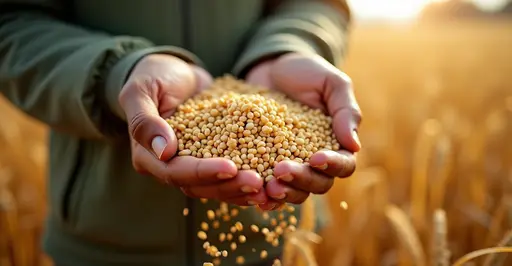
Breakthrough in Nutrient-Enhanced Staple Crops
Scientists have released a new generation of biofortified crops designed to combat malnutrition in vulnerable populations worldwide. These nutrient-enhanced varieties of staple grains like rice, wheat, and maize contain significantly higher levels of essential vitamins and minerals including iron, zinc, and vitamin A.
Addressing Hidden Hunger
Biofortification targets "hidden hunger" - micronutrient deficiencies affecting over 3 billion people globally. Unlike conventional fortification which adds nutrients during processing, biofortification enriches crops as they grow through either selective breeding or genetic engineering. This approach is particularly valuable for rural communities with limited access to commercially fortified foods.
Recent trials show promising results: In Mozambique, children consuming beta-carotene enriched sweet potatoes experienced 24% less vitamin A deficiency. Indian studies found iron-biofortified pearl millet improved hemoglobin levels in children.
Global Implementation
Organizations like HarvestPlus have released over 400 biofortified varieties across 40+ countries. Recent innovations include:
- Iron-enriched beans in Zimbabwe
- Zinc-enhanced rice in Bangladesh
- Vitamin A-fortified cassava in Nigeria
- Purple tomatoes with high antioxidants
According to HarvestPlus, these crops now reach over 115 million people in farming households. Economic analysis shows every dollar invested in biofortification generates up to $17 in health and productivity benefits.
Scientific Advancements
Researchers are developing climate-resilient biofortified crops using both conventional breeding and genetic engineering. Recent breakthroughs include:
- CRISPR-edited high-iron cassava
- Zinc-fortified wheat varieties
- Omega-3 enriched oilseed crops
"Biofortification represents a sustainable solution to malnutrition," says Dr. Howarth Bouis, founding director of HarvestPlus. "These crops deliver nutrients through existing food systems without requiring behavior change."
Challenges and Future
Despite progress, challenges remain including regulatory hurdles for GM crops, farmer adoption rates, and ensuring nutrient retention during cooking. Organizations are developing educational programs and market incentives to increase acceptance.
With climate change threatening food security, biofortified crops offer a promising tool for improving nutritional outcomes in low-income regions. Research continues to expand the range of fortified crops and enhance nutrient bioavailability.

 Nederlands
Nederlands
 English
English
 French
French
 Deutsch
Deutsch
 Espaniol
Espaniol
 Portugese
Portugese



